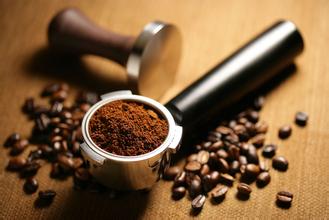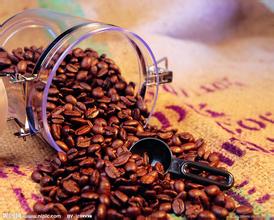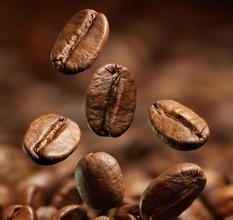Description of varieties and flavors of Ethiopian coffee beans taste treatment method grinding scale of varieties in producing areas
Description of varieties and flavors of Ethiopian coffee beans taste treatment method grinding scale of varieties in producing areas
"Ethiopian Sidamo" is a type of single origin and grows in Arabica coffee in Ethiopia's Sidamo province. Like coffee in most African countries, Ethiopian Sidamo is characterized by small gray beans, but characterized by its rich, spicy, wine or chocolate-like taste and floral aroma. The most distinctive flavors found in all Sidamo coffee are lemon and citrus with bright and crisp acidity. Sidamo Coffee includes Yirgachefe Yega Snow Coffee and guji Coffee, which are of very good quality.
The legend of the cultivation of coffee and how coffee culture spread around the world has become one of the greatest and most romantic stories in history. Since the discovery of this so-called "devil bean" by shepherds in the Ethiopian desert, they began to chew coffee beans and drink coffee in water. This trend began in Ethiopia and went on an expedition to Arabia, quickly captivating sentient beings and becoming a drink all over the world. To this day, when it comes to coffee, Ethiopians always proudly say, "Coffee is a gift we give to the world."
Ethiopian coffee is known as "wilderness coffee", and a cup of Ethiopian coffee can bring you a primitive experience you've never had before. Ethiopia has unique natural conditions suitable for growing all imaginable varieties of coffee. One of the most famous Ethiopian Harald coffee has a mixed flavor, mellow taste, moderate or mild acidity, and most importantly, it has almost the lowest caffeine content, about 1.13%, and it is a very special kind of coffee. its taste is very aggressive and ready to beat your taste buds, making it hard to forget.
Many people do not know that Ethiopia is the origin of coffee. Once upon a time, there was a town in southern Ethiopia called Kafa, where there were some red fruits. Shepherds found that the sheep were so excited after eating the fruit that they picked it down and tasted it, so the fruit was picked and cooked by local monks and used as refreshing food for night prayers. It was called "Kafa". Then it was spread all over the world, called "coffee".
Ethiopian coffee is mostly produced in the plateau above 2000 meters above sea level, with large producing areas such as Gima, Gamby, Yeerqifa, Sidamo and Harald. Because of the soil conditions, climatic conditions and the altitude of more than 2000 meters in these areas, it has created an ideal environment for the growth of coffee crops. Among them, the Montenegro region of Harald is the only place in the world with wild coffee, which is auctioned in London every year.
Taste and classification
The most famous coffee in Ethiopia is Harald coffee. Harald is located in eastern Ethiopia. Harald is an ancient city with a long history and one of the four holy cities of Islam. The Harald region has the best altitude for Arabica coffee and is the highest coffee producer in Ethiopia.

Important Notice :
前街咖啡 FrontStreet Coffee has moved to new addredd:
FrontStreet Coffee Address: 315,Donghua East Road,GuangZhou
Tel:020 38364473
- Prev

Description of characteristics and flavor of Latin American coffee beans grinding scale variety producing area
Latin American coffee bean characteristic flavor description grinding scale variety producing area there are three main treatment methods of Brazilian manor coffee beans: 1, water washing treatment 2, dry / natural treatment 3, mucous membrane natural fermentation treatment is generally typical, washed coffee beans have the brightest and clearest taste of all Brazilian coffee beans and have the most unique acidity, while the top-grade coffee beans have the brightest and clearest taste and the most unique acidity
- Next

Taste, yield, taste and flavor description of Ugandan coffee growing environment
Taste output of Ugandan coffee taste and flavor description characteristics the growing environment belongs to the basic flavor. It is characterized by chloride, bromide, iodide, nitrate and sulfate solution of potassium and lithium. Mainly from the fungiform papillae on the front edge of the tongue, sour (acidy), mellow (mellow), winey (wine), bland (light) and sharp (sharp) can be sensed.
Related
- Detailed explanation of Jadeite planting Land in Panamanian Jadeite Manor introduction to the grading system of Jadeite competitive bidding, Red bid, Green bid and Rose Summer
- Story of Coffee planting in Brenka region of Costa Rica Stonehenge Manor anaerobic heavy honey treatment of flavor mouth
- What's on the barrel of Blue Mountain Coffee beans?
- Can American coffee also pull flowers? How to use hot American style to pull out a good-looking pattern?
- Can you make a cold extract with coffee beans? What is the right proportion for cold-extracted coffee formula?
- Indonesian PWN Gold Mandrine Coffee Origin Features Flavor How to Chong? Mandolin coffee is American.
- A brief introduction to the flavor characteristics of Brazilian yellow bourbon coffee beans
- What is the effect of different water quality on the flavor of cold-extracted coffee? What kind of water is best for brewing coffee?
- Why do you think of Rose Summer whenever you mention Panamanian coffee?
- Introduction to the characteristics of authentic blue mountain coffee bean producing areas? What is the CIB Coffee Authority in Jamaica?

